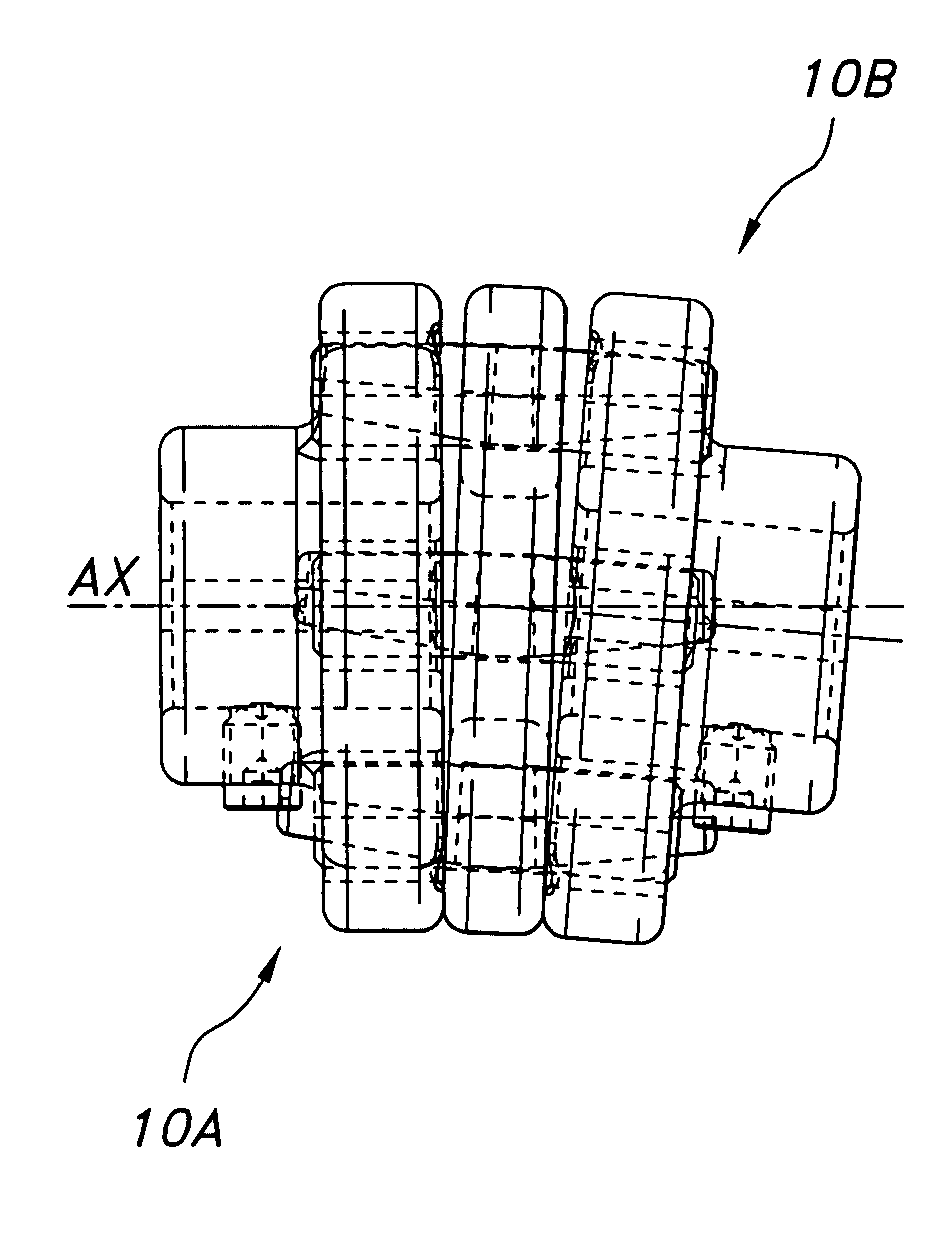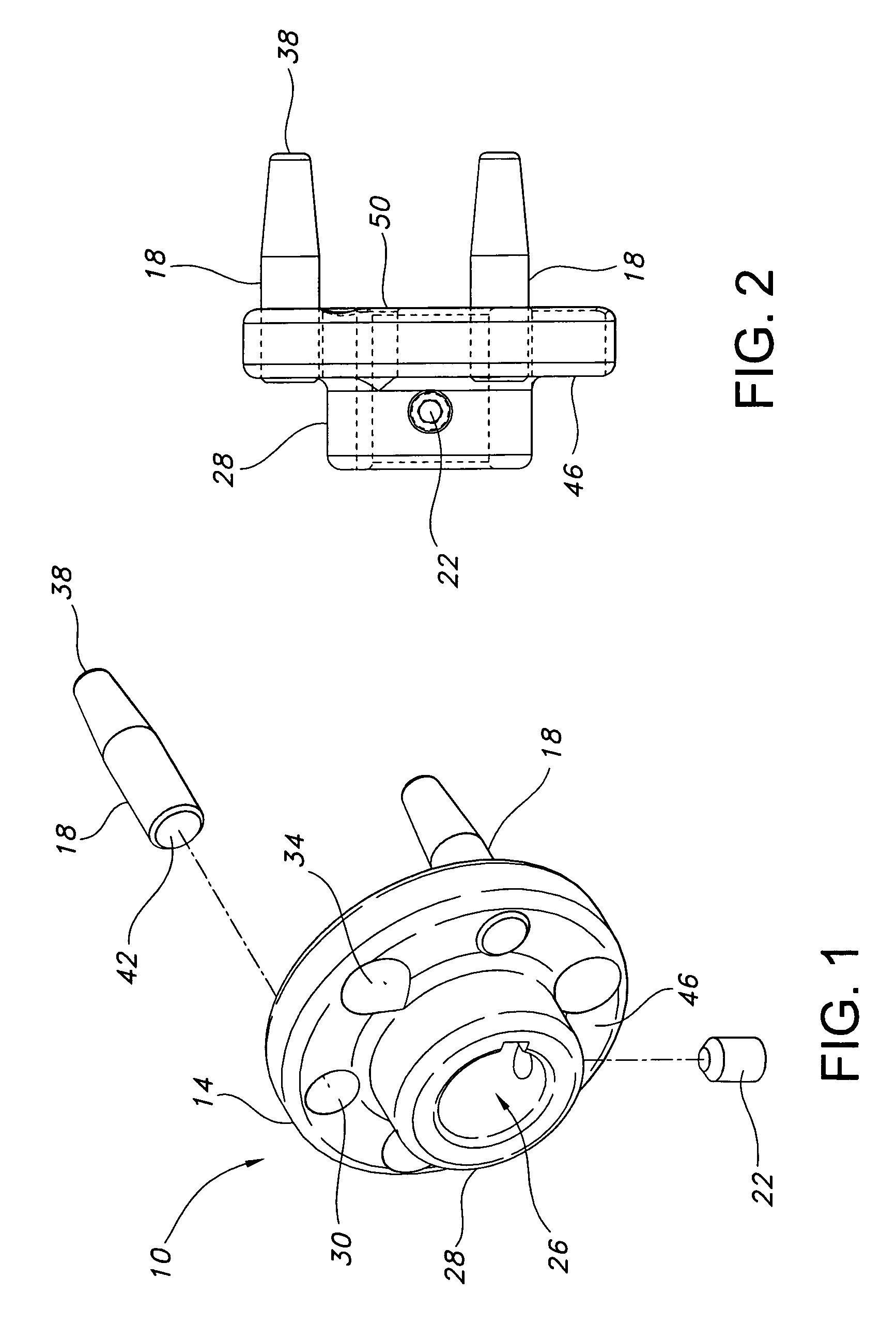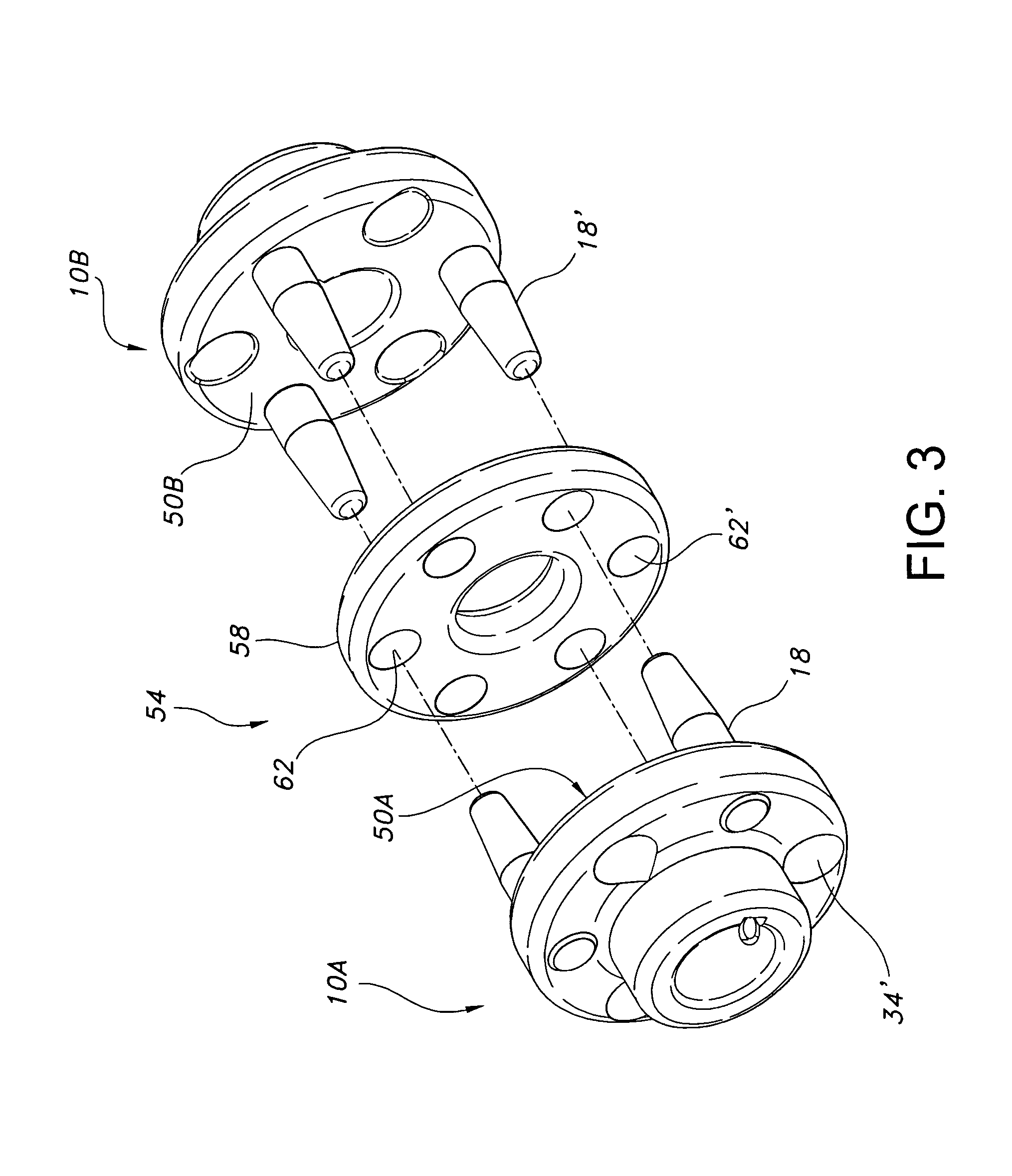Flexible couplings
a flexible coupling technology, applied in the field of assemblies, can solve the problems of limiting the functionality of the coupling, unable to provide dampening, and essentially no flexibility, and achieve the effects of low manufacturing cost, good dampening qualities, and minimal backlash
- Summary
- Abstract
- Description
- Claims
- Application Information
AI Technical Summary
Benefits of technology
Problems solved by technology
Method used
Image
Examples
Embodiment Construction
[0034]Illustrated in FIGS. 1–2 is hub assembly 10. Assembly 10 comprises hub 14 and one or more pins 18. Also included as part of assembly 10 may be fastener 22, which is shown in FIGS. 1–2 as comprising a set screw. However, those skilled in the appropriate art understand that devices other than or in addition to a set screw may be utilized as fastener 22.
[0035]Depicted in hub 14 is bore 26, defined by collar 28 and designed to receive, in use, a rotating shaft. After such a shaft is received in bore 26, fastener 22 may be tightened to fix the position of the shaft relative to hub 14. One or more openings 30 in hub 14 receive pins 18. Pins 18 typically are pressed into openings 30 and maintained therein with a friction fit. They need not, however, be so pressed, but instead may be connected to hub 14 in any suitable way or integrally formed therewith.
[0036]Also illustrated in hub 14 are one or more clearance holes 34. Shown as interspersed radially with openings 30, clearance holes...
PUM
| Property | Measurement | Unit |
|---|---|---|
| rotation | aaaaa | aaaaa |
| length | aaaaa | aaaaa |
| elastomeric | aaaaa | aaaaa |
Abstract
Description
Claims
Application Information
 Login to View More
Login to View More - R&D
- Intellectual Property
- Life Sciences
- Materials
- Tech Scout
- Unparalleled Data Quality
- Higher Quality Content
- 60% Fewer Hallucinations
Browse by: Latest US Patents, China's latest patents, Technical Efficacy Thesaurus, Application Domain, Technology Topic, Popular Technical Reports.
© 2025 PatSnap. All rights reserved.Legal|Privacy policy|Modern Slavery Act Transparency Statement|Sitemap|About US| Contact US: help@patsnap.com



